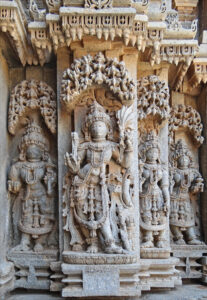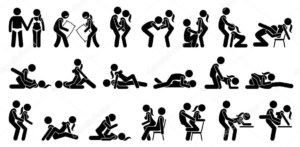Introduction to Kamasutra

The Kamasutra, a prehistoric Hindu scripture on sensual love written in Sanskrit, is where the term Kama Sutra originates. Apart from his name, not little is known about the author, Vatsyayana Mallanga. It was most likely written in the third century.
Contrary to commonly held beliefs, The Kamasutra is not just a book about different sex positions and romantic relationships. Other subjects covered include the art of living well, the nature of love, finding a life partner, and maintaining your romantic relationships. With the modification of the Kamasutra handbook by a British explorer by the name of Richard Francis Burton towards the end of the 19th century, the sexual ideals that most people connect with the Kama Sutra became known in Western culture.
The sexual positions portrayed in Burton’s translation are what drew people’s attention, despite being thought of in retrospect as a highly inaccurate and misleading translation. That is one of the reasons why the Kama Sutra is still regarded as nothing more than a book of unusual sex gestures.
Table of Contents
How does Kamasutra function?
It turned out challenging to faithfully translate the Kamasutra into contemporary English because it was written in a hazy and abstract version of Sanskrit. There are 36 chapters and 1,250 verses total in it. The entire book is divided into seven sections:
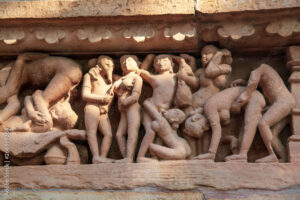
1.Dattaka — General Principles of Kamasutra
The introduction and history of the four purposes of Hindu life are presented at the start of the book. It offers guidance and philosophy on matters like how to lead an honorable life and how to learn.
2.Suvarnanabha — Amorous Advances and Sexual Union
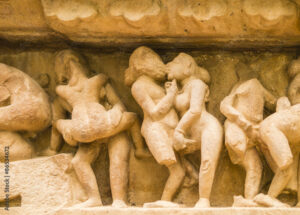
The sexual component that many people connect with the Kamasutra is covered in detail in Part 2.64 various sorts of sexual behaviors are described in depth, ranging from kissing and cuddling to more aggressive behaviors like grasping and slapping.
3.Ghotakamukha — Acquiring a Wife
The third section discusses how to woo a woman for marriage and what it’s like to be a bachelor. According to the social caste system in India, they are mostly based on astrological compatibility and the advantages of marriage for the families involved.
4. Gonardiya — Duties, and Privileges of The Wife
The author’s perspective on the typical responsibilities of a wife—cooking, cleaning, and taking care of her husband—is covered in part four. Consider that this piece was written thousands of years ago, in a different time and place, and that it may appear out of place with modern relationships and views on gender roles.
5.Gonikaputra — Friends and Family
The roles played by various genders in non-sexual relationships are described in part five. It explores strategies to strengthen ties between family and friends and teaches how to interpret emotions.
6.Charayana — Courtesans
The sixth chapter examines a man’s employment of courtesans or prostitutes in order to improve his sexual abilities prior to seeking a marriage. Additionally, it offers guidance on how to become affluent, how to mend broken relationships with friends and lovers, and what qualities to seek for in a committed spouse.
7.Kuchumara — Occult Practices
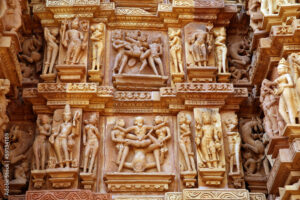
The final chapter of the book is devoted to sexual practices’, myths, and stories. Personal grooming, the use of colognes and oils, and homoeopathic treatments for sexual issues are all included in this.
Sex Positions of the Kamasutra
While the majority of the postures are hard and challenging, several are simple enough for most individuals to attempt. Examples comprise:
1.The Tigress
The reverse cowgirl position is similar to this one. One person starts out on their back while the other climbs up and sits upright while facing their partner’s feet. In order to manage the pace and depth of the penetration, the person on top rocks back and forth.
2.The Milk and Water Embrace
A chair without arms is preferred for one partner to sit in. On top of them, facing away, is the other partner.
3.Clasping Position
This role is a variant of the missionary role. With their legs out and straight, the two couples lie down together on a comfortable surface. While the other partner pushes from the bottom position, one partner lies on top of the other with their bellies touching.
4.Queen of Heaven
On their back, one partner lies with their knees bent towards their chest. The other partner leans forward while placing their thighs outside of the other’s bent legs.
5.Ballet Dancer
One person balances on one foot while supporting themselves by encircling their partner’s waist with their other leg.
6.Splitting the Bamboo
Stretching flat, one person moves their weight to one side before raising a leg and placing it on their partner’s shoulder. Underneath their companion, the other leg is still extended.
7.The Padlock
One partner reclines back somewhat while seated on a stable surface, such as a table. The other partner leans in, raising and firmly cradling the other person’s pelvis. The standing partner then clasps their feet behind the seated partner’s back.
The Kamasutra’s myths
1.The Kamasutra is purely a book about sex.
Contrary to common opinion, the Kama Sutra discusses a variety of topics related to romance, marriage, and relationships with partners.
2.Only persons who are strong and flexible can perform Kamasutra sex postures.
While some positions in the Kama Sutra are somewhat physically demanding, many others only ask for normal flexibility.
How to Safely Try Kamasutra
To try some of the Kama Sutra positions, be sure you and your partner are physically capable of doing so. Stop and attempt another stance if you experience any pain or discomfort while performing one.
Conclusion
Thank you for reading this fruitful content, may be it enhanced your knowledge about Kamasutra that Kamasutra is not just a guide to physical intimacy, but a profound exploration of human connection, desire, and the art of love.


